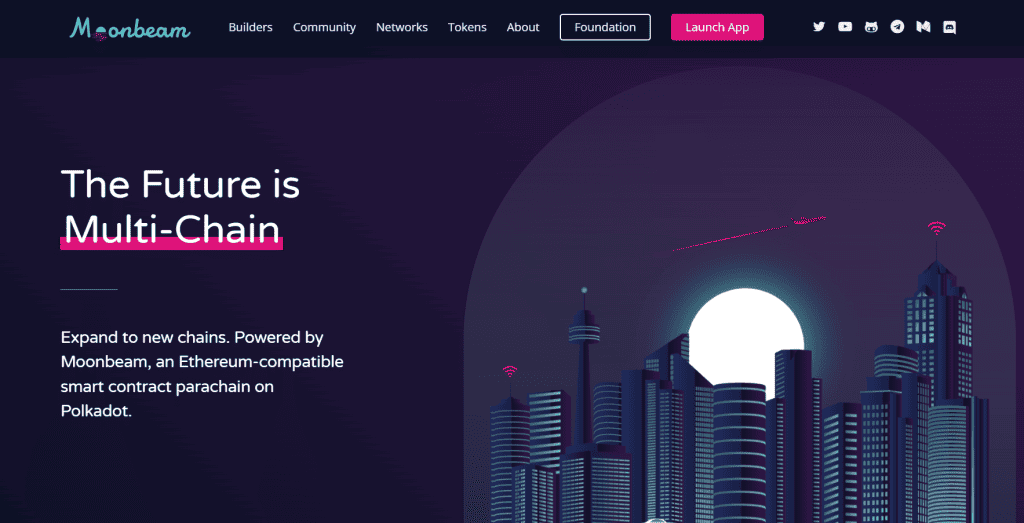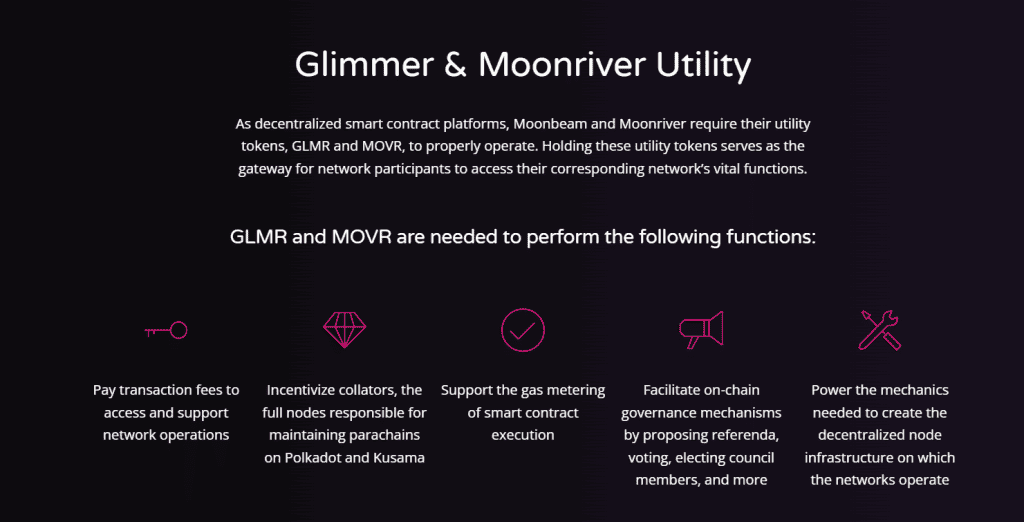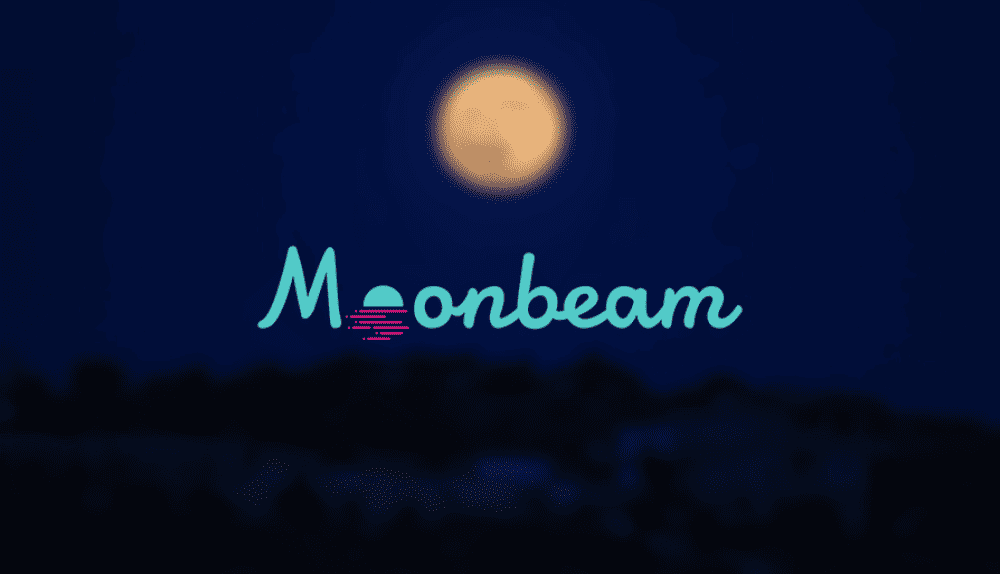What is Moonbeam (GLMR)? How Does Moonbeam Work?
Moonbeam is one of the leading platforms that provide access to Ethereum tools while establishing a strong connection between smart contracts.
The demand for cross-chain platforms is continuously increasing due to the mass adoption of decentralized applications. The decentralized applications offer a range of innovative solutions in the blockchain space. But the developers often need to use third-party services to fetch information from other applications.
Although there are some cross-chain platforms that offer this facility, the developers avoid using them because they’re mostly built independently. Thus, they can’t offer the security features of the leading smart-contract-capable blockchain network, Ethereum. However, there are some cross-chain platforms built on top of Ethereum.
Thus, they provide the combined benefits of Ethereum and cross-chain platforms.
What is Moonbeam?

Moonbeam is a parachain on Polkadot dedicated to offering an Ethereum-compatible environment. Polkadot is the Relay chain that handles a range of parachains. The developers can easily move the workload from Ethereum to Moonbeam using the Ethereum Virtual Machine and its web3 API.
The developers no longer need to worry about forking the blockchain network as they can easily upgrade their contracts with this interoperable Substrate blockchain.
Moonbeam is an attractive choice for developers who want to build decentralized applications that can operate on a multi-chain network. Similarly, average investors can also link their assets from multiple chains using this network. The developers can increase the reach of their projects by migrating them to Moonbeam.
Moonbeam offers a range of additional features that aren’t available on Polkadot. So, Polkadot users can also take advantage of these features to provide a better user experience. With Moonbeam’s Substrate framework, the developers can build innovative DApps that can process complex transactions.
The Moonbeam team has also built a canary network on Kusama called Moonriver. The developers can thoroughly test their projects and codes on this sister parachain before making it live.
Moonriver is also an Ethereum-compatible platform due to which the developers don’t face any problem transferring the workload.
Moonbeam Brief History
Moonbeam was introduced by a development outfit, PureStake, in 2020. The development firm also runs validators on Polkadot and the team also built development tools for Algorand. After six months of the testnet launch, many popular projects including Injective Protocol, Sushi, Linear Finance, and Bet Protocol, signaled their intent to build on Moonbeam.
PureStake team also introduced the Moonriver project in June 2021 which shares its features with Moonbeam and provides a testing environment for new projects and tools. The mainnet was officially launched on Jan-22. Since then, a huge number of applications have been migrated to the platform.
Important Features of Moonbeam

Image source
Ethereum-Compatible – Ethereum developers can easily migrate their DApps and smart contracts to Moonbeam because it’s fully compatible with Ethereum. The Ethereum tools including development frameworks and wallets can easily be integrated into the Moonbeam ecosystem.
Multi-Chain Interoperability – The Moonbeam-based applications can easily interact with Polkadot parachains and external networks. Thus, it supports the smooth transfer of data and digital assets between different blockchain networks.
Low Gas Fees – Moonbeam extends its features to a wider range of users by offering low gas fees compared to Ethereum and other networks.
Scalability – Moonbeam can process thousands of transactions per second with its modified version of the proof-of-stake consensus protocol. Thus, it can perfectly accommodate the needs of DApps that handle a huge amount of traffic every day.
Governance – Moonbeam transfer governance rights to its token holders. The token holders can vote on proposals for the development and upgradation of the protocol. Thus, it provides a truly decentralized and democratic environment to the users.
How Does Moonbeam Work?
Moonbeam uses a delegated Proof-of-stake consensus mechanism to process transactions. In this system, the token holders delegated their tokens to a group of people who can validate transactions. The elected individuals use their computational resources to create new blocks.
They receive rewards in the form of GLMR tokens. Then they distribute the tokens among other users who elected them. The token holders can choose to elect another validator if they aren’t satisfied with the existing one.
The developers can execute Solidity-based smart contracts on the network with the Moonbeams full-featured Ethereum Virtual Machine. Moonbeam also uses the Runtime Environment to provide access to Polkadot’s governance system.
The Moonbeam parachain consistently stores and validates transactions while updating required information on Polkadot.
Moonbeam Tokenomics
GLMR is the native token of Moonbeam that is primarily used to purchase products and services from different applications. The token holders can also delegate their tokens to a group of individuals to participate in the validation process. Similarly, the token holders can also participate in the voting process for several proposals.
With a circulating supply of 623.9 million tokens, GLMR has a market cap of $213 million. It ranks among the 200 best cryptocurrencies in terms of market cap.
Conclusion
Moonbeam is a promising cross-chain platform that offers an Ethereum-compatible environment for developers to build decentralized applications. It allows for easy migration of DApps and smart contracts from Ethereum to Moonbeam and offers multi-chain interoperability, low gas fees, scalability, and governance rights to token holders.
Moonbeam’s canary network, Moonriver, also provides a testing environment for new projects and tools. If you need more information about Moonbeam, feel free to get in touch with us. We also invite you to subscribe to our weekly newsletter if you need regular updates about Bitcoin and crypto market.











